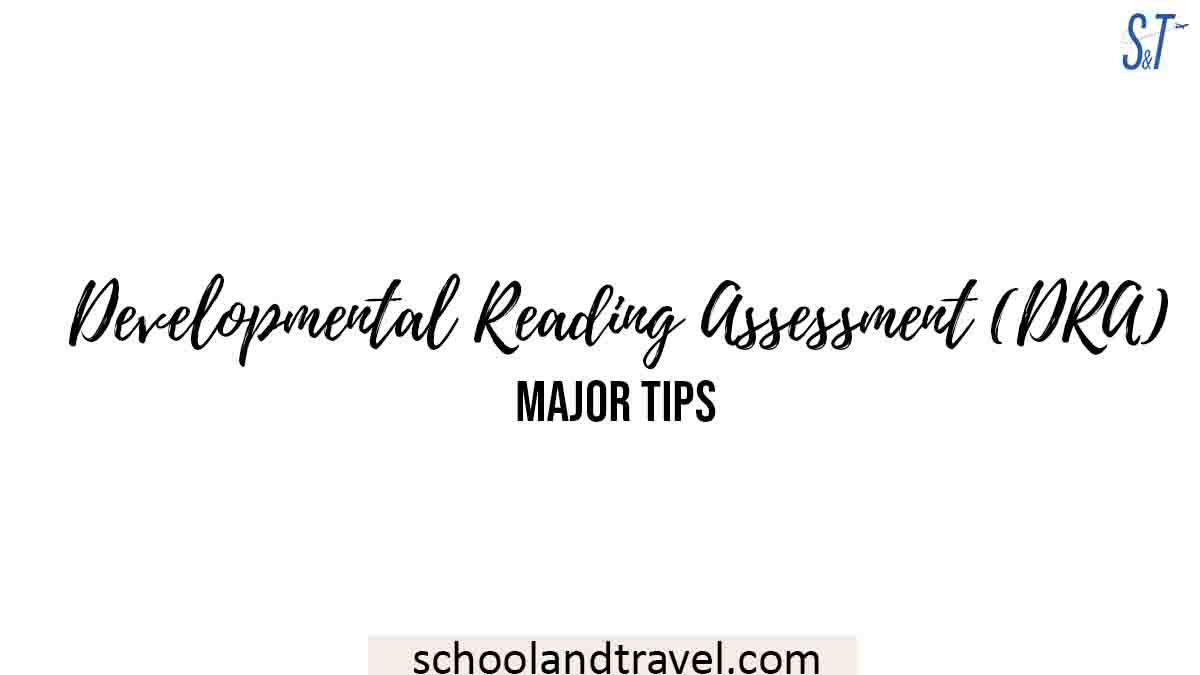Developmental Reading Assessment (DRA) is an assessment done to assess the child’s reading capability from the stage of kindergarten through 8th grade. This test is carried out individually on the students.
DRA is a tool that aids teachers assess the children’s reading capability. It also helps teachers identify the next step to take to enhance the child’s reading capability.
This assessment is usually given to the students at least twice a year and goes a very long way in improving the children’s reading capabilities, making them better readers.
It also enables them read with the right intonations, observing the punctuation marks.
In September 2009, all Priority School Districts (PSD’s) were required to use the DRA2 district-wide for Grades 1-3.
“Each school year commencing on or after 1st July 2011, each local and regional board of education for a priority school district shall require the schools under its jurisdiction to evaluate the reading level of students enrolled in kindergarten at the end of the school year, while students in Grades 1-3, inclusive, at the beginning, middle and at the end of the school year”.
Section 10-265g (b) of the Connecticut General Statutes (CGS)
Students in Grades 1-3 are normally assessed in September, and all kindergarten students are assessed at the end of the school year.
If a student is found to be deficient, then it must be based solely on the measures set by the Board of Education.
The rules were enacted to make sure that any student who cannot read well is easily identified and the errors corrected with ease. It isn’t easy to get a child to read after grade 3, so getting the child to read at the early stages of life is easier.
Developmental Reading Assessment (DRA) was accepted as the standardized test to help find out the students who are deficient in reading on December 1, 1999.
Developmental Reading Assessment (DRA)
Benefits of Developmental Reading Assessment
- DRA helps teachers know the reading levels of the students.
- It can help the teacher to observe the students better.
- Teachers, with the aid of DRA, record and evaluate the students’ performance.
- It helps teachers know students’ weaknesses and how the student can be helped.
- The students can be assessed individually as they are allowed to read different texts and say what they could get from the texts.
- This also helps the teacher find out where growth has occurred.
- It measures every aspect of the student’s reading skills; reading accuracy, fluency, and comprehension.
- DRA produces thorough diagnostics.
- It helps a teacher know the next line of action.
Read this: Academic Probation – Everything you need to know
How can the parents be of help?
- Parents can help improve their child(ren)’s reading ability by constantly reading to and with them.
- They should spend time listening to their child read independently.
- When a child reads a book, parents should talk about it with their child and ask for a synopsis of the story.
- Your child should learn how to use facial expressions when reading. This will help to act out any scene easily.
- Parents should also help their child(ren) identify and understand their reading strategies.
- Encourage your ward to write out on a paper or book a story of his or her own.
The components of the DRA2 that are required include the following:
- Leveled texts
- Teacher Observation Guide
- DRA2 Continuum, which is part of the Teacher Observation Guide
- DRA2 Focus for Instruction which is also part of the Teacher Observation Guide
Developmental Reading Assessment (DRA)
What time of the year are the students assessed?
The DRA2 assessment is taken three times a year for students in grades 1 through grade 3. The kids in kindergarten take their test usually at the end of the year. The first administration is usually completed in September.
The education board is flexible at times because holidays, vacations, and even the weather are put into consideration.
During the mid-year, four weeks is taken to assess the children from January to February. For the end of the year, four weeks is also taken during April and May.
Read this: Critical Literacy (Everything you need to know)
The cons of DRA:
1. Time.
Time is consumed when doing the assessment. You can spend 10 minutes in assessing a student in grade one. Most times you spend more time if you need to need to access him more in order to find out their highest independent level.
As the student progresses in level, more time is consumed. You can spend 30 minutes on a student, even more when you need to determine their highest independence level.
Sometimes it is so bad that the classroom period has to be used so that the test will be completed because the time allocated for the test was not enough.
At a particular level when the students now have to write down their responses, more time is spent reading their responses.
The teachers observe the students, record and evaluate their performances. Then, based on their performance, he will know how to help the student improve.
2. The content of the assessment
The assessment consists of different stories which come in various levels of difficulty and requires the students to read the story and then narrate the story in his or her own words.
The student’s level of reading is then assessed by the teacher, noting how efficiently he or she reads, and the methods used to read the words or pronounce the words that are unfamiliar to him or her.
The teacher checks how fluent the student is when reading and also the student’s ability to write a comprehensive summary of the story he or she read.
Developmental Reading Assessment (DRA)
The scores of the DRA2
Accuracy rate: Level A – 40 is Independent or above
- Comprehension: Level 4-38 on the continuum is a score of 19 or even higher. Level 40 is a score of 17 or even higher.
- Oral Reading: Level 14 and above is Independent
or above.
Now some people will be wondering what happens to disabled children. Well, that is very simple.
A Planning and Placement Team (PPT) determines whether the disabled child will take part in the exam, if not what alternative can be given. The decision of what alternative is given to the student is based on the PPT.
Awesome one, I hope this article on “Developmental Reading Assessment (DRA)” answered your question.




